Education, Health & Care Plans
Identifying the need for an EHC Plan
While carers and teachers are often the first to identify that a child has SEN, anyone in the life of a Looked After Child who suspects they have unmet needs should raise this at the PEP meeting. Information on the child, such as prior and current attainment data and feedback from their teachers, will form part of the PEP and this information will show whether the child is attaining and progressing in line with their peers. A plan should be devised to assess the child's needs further and to ensure there is support available to meet them.
Such a plan is likely to include a discussion with the school's SENCO about the needs of the child and how they can best be met within the school.
Based on the SENCO's assessment of the child's needs, interventions and strategies will be put in place to support the child and monitor their impact. The SENCO may also employ specialists to assess and support the child, such as educational psychologists, occupational therapists, specialist teachers or CAMHs. The SENCO may also ask the carer to implement certain strategies and interventions outside of school.
The SENCO will keep a record of strategies and interventions employed and their impact on the learning of the child. They will have a timeframe for review and refinement of strategies and interventions that will be shared with carers and social workers.
If despite such interventions and strategies, the child does not make progress in line with their peers over the agreed timeframe, and it is agreed that the child's needs exceed those normally addressed in mainstream education provision, a request for assessment for for an EHC Plan can be made, taking into account the statutory guidance contained in the SEND code of practice (see Appendix 32).
This request will be made to the local authority in which the child lives. This may not be the same as the 'responsible' local authority.
The request can be made by:
- The child's parent or person with parental responsibility, which could be the social worker
- A young person over 16 and under 25 years of age
- A person acting on behalf of the child or young person's educational institution, such as the SENCO. It is expected that this will be made with the agreement of those with parental responsibility or the young person.
The drafting of the EHC Plan
Once the request for an assessment for an EHC Plan has been made, the maximum time that may be taken to complete the process is 20 weeks (unless there are exceptional circumstances). The code of practice specifically states that for children looked after there should be no delay.
Once the request for an assessment has been made, the local authority has six weeks in which to make a decision as to whether or not to make the assessment and to communicate that decision to those with parental responsibility or the young person. If the decision is not to undertake an assessment, the local authority will let those with parental responsibility or the young person know how to appeal and they will have a maximum of six weeks in which to do so.
If the local authority has decided in favour of the assessment, then it has a further six weeks in which to gather the information it needs.
Once the local authority has considered all reports, strategies and interventions used, it will then make the decision as to whether the child or young person is in need of an EHC Plan. If it is decided that the child is not in need of an EHC Plan, it will notify those with parental responsibility of their right to appeal and that they must do so within 16 weeks of the initial request for assessment. If it is decided that the child does need an EHC Plan the authority will make a draft plan and send it to those with parental responsibility before the end of the twelfth week from the initial request.
Those with parental responsibility or the young person then have 15 calendar days to provide their views on the plan, should they wish to do so. Within this time, they may also request for a particular school or educational institution to be named on it. The local authority will then consult with that school as to whether or not they are in a position to meet the needs of the child as written in the draft EHC Plan. They must respond within 15 calendar days. If they decline, other schools will be consulted and must also respond within 15 calendar days.
It is good practice that before a school is named on an EHC Plan, it should be visited by the social worker, the carer and birth parents, if appropriate, supported by the VSO. Once it is named, the child or young person should be taken to visit it and all support offered as per any other school transition.
Once a school has been named on the draft EHC Plan it can be finalised.
Once the child or young person has an EHC Plan
The EHC Plan will be reviewed on an annual basis. The review meeting, which will normally be chaired by the school's SENCO, will measure the impact of the strategies and interventions used on the child's progress and may suggest amendments to the EHC Plan. It is usual practice for the SENCO to write an individual education plan for the child that sets out the strategies and interventions to be used by teachers and other professionals to meet the child's needs, as outlined in the plan.
The SENCO and the DT are required to work closely together in promoting the achievement of the Looked After Children with SEN. They will need to ensure that the implications of a child having SEN and being looked after are fully understood by all of the child's teachers and support staff, and that appropriate teaching strategies are in place and their effectiveness monitored.
It is important to not duplicate plans for Looked After Children. It is therefore advisable for the annual review of the EHCP to be held at the same time as the PEP meeting as the latter is part of the care plan and the information it contains will feed into the Looked After Children review.
When a Looked After Child does not live in the area of the authority which is looking after them (the responsible authority), the local authority in which they live (the area authority) maintains their EHCP, whilst the responsible authority provides any necessary funding. In maintaining the EHCP, the area authority will review it at least once per year and amend it where necessary.
When a Looked After Child with an EHCP moves from one authority to another, the authority that maintains the plan must send it to the new area authority.





